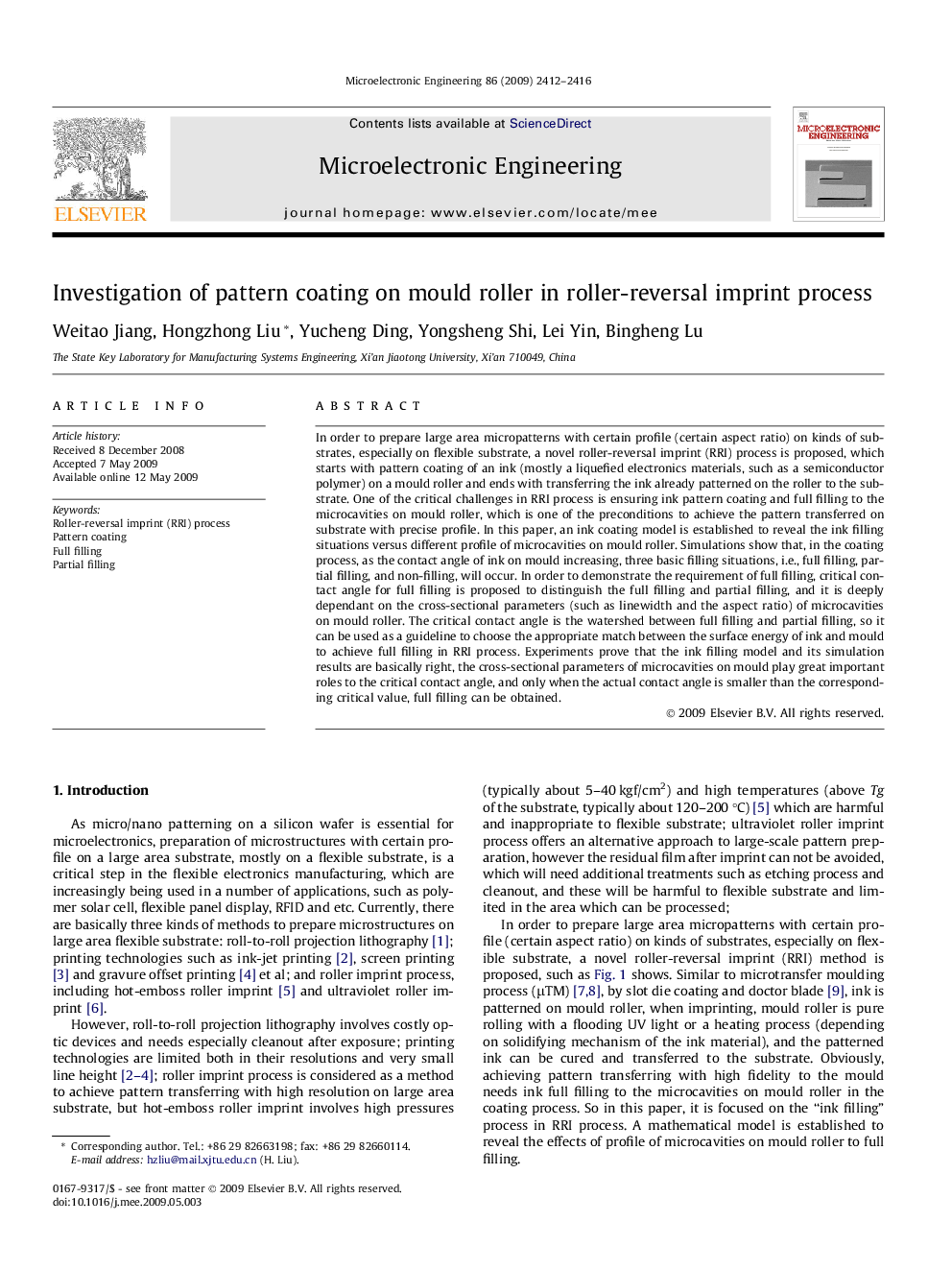| Article ID | Journal | Published Year | Pages | File Type |
|---|---|---|---|---|
| 543242 | Microelectronic Engineering | 2009 | 5 Pages |
In order to prepare large area micropatterns with certain profile (certain aspect ratio) on kinds of substrates, especially on flexible substrate, a novel roller-reversal imprint (RRI) process is proposed, which starts with pattern coating of an ink (mostly a liquefied electronics materials, such as a semiconductor polymer) on a mould roller and ends with transferring the ink already patterned on the roller to the substrate. One of the critical challenges in RRI process is ensuring ink pattern coating and full filling to the microcavities on mould roller, which is one of the preconditions to achieve the pattern transferred on substrate with precise profile. In this paper, an ink coating model is established to reveal the ink filling situations versus different profile of microcavities on mould roller. Simulations show that, in the coating process, as the contact angle of ink on mould increasing, three basic filling situations, i.e., full filling, partial filling, and non-filling, will occur. In order to demonstrate the requirement of full filling, critical contact angle for full filling is proposed to distinguish the full filling and partial filling, and it is deeply dependant on the cross-sectional parameters (such as linewidth and the aspect ratio) of microcavities on mould roller. The critical contact angle is the watershed between full filling and partial filling, so it can be used as a guideline to choose the appropriate match between the surface energy of ink and mould to achieve full filling in RRI process. Experiments prove that the ink filling model and its simulation results are basically right, the cross-sectional parameters of microcavities on mould play great important roles to the critical contact angle, and only when the actual contact angle is smaller than the corresponding critical value, full filling can be obtained.
